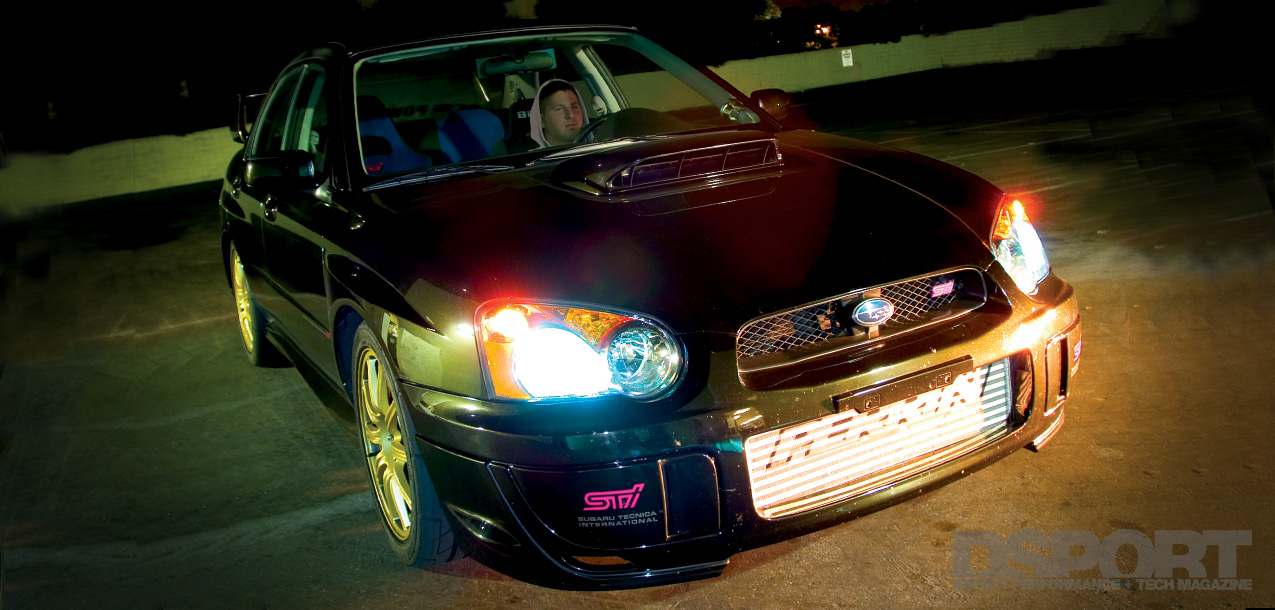The Dyno
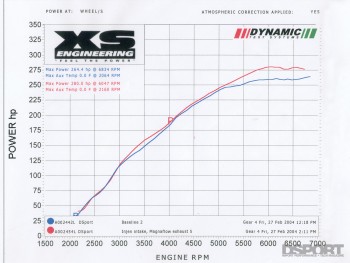 Baseline
Baseline
Last time we left off generating 280 horsepower at the wheels hitting a peak boost pressure of 17 psi.
280.0 WHP @ Factory Boost Level
Dynamic Test Systems Dyno
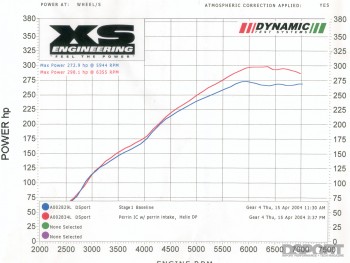 Test 1 PERRIN Intake and FMIC + Helix Downpipe
Test 1 PERRIN Intake and FMIC + Helix Downpipe
Power was increased in all points in the graph and significant gains began to appear at about 4,500rpm until redline. Gains were as high as 34 horsepower and peak horsepower jumped by over 18 horsepower.
298.1 WHP @ 6,355 RPM
Peak Boost: 18.5 psi
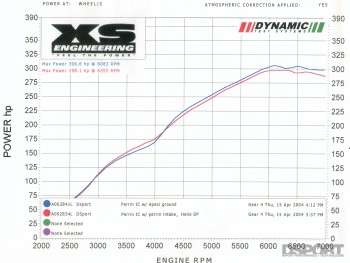 Test 2 A’PEX Integration Super Ground System
Test 2 A’PEX Integration Super Ground System
The A’PEX Integration Super Grounding System (SGS) also delivered gains from 4200 rpm until redline. Gains were as high as 13 horsepower with the peak horsepower being pushed up by 8.5 additional horsepower.
306.6 WHP @ 6,083 RPM
Peak Boost: 18.5 psi
Last time we left off generating 280 horsepower at the wheels hitting a peak boost pressure of 17psi. With the PERRIN front-mount intercooler in place, a substantial amount of additional cooling was provided. When you cool the charge air more, you also experience a pressure reduction. The PERRIN intercooler was doing a good enough job to reduce our boost pressure at the manifold by roughly two psi. For this pull on the dyno, peak boost was down to 15 psi with power checking in at 273 horsepower. A fair assessment of the PERRIN front-mount intercooler’s performance potential could have been obtained at this point if we would have been able to correct the boost pressure back up to the 17psi mark we previously encountered. Doing the math, this should have put horsepower at the 291 pony mark. Unfortunately, our STi is not yet equipped with a boost controller, so we didn’t have that option.
[pullquote]WE EXPECTED A SIGNIFICANT BOOST INCREASE FROM THE INSTALLATION OF THE HELIX DOWNPIPE[/pullquote]One of the main reasons that we chose to not install a boost controller yet is that we expected a significant boost increase from the installation of the Helix downpipe and the resulting removal of the three factory catalytic converters. As expected, the boost pressure did rise to a peak of 18.5psi. This represented a 3.5psi increase from the factory downpipe and cat arrangement. On the dyno, the elimination of the exhaust restriction and increase in boost pressure resulted in an increase in horsepower to the 298 mark. Now the obvious question was “Could the A’PEX Integration Super Grounding System (SGS) give us the 1.9 horsepower we would need to go over the 300 mark?”
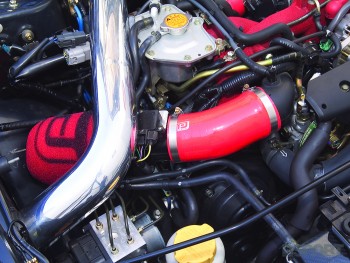
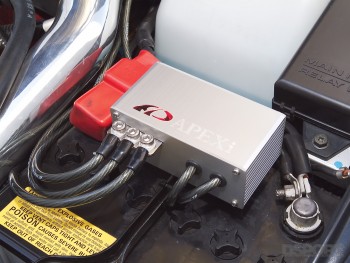 With our previous experience with performance-oriented engine grounding systems, we’ve seen the biggest gains on older vehicles and Mazdas. It was our theory that as the factory grounding systems became less efficient, the addition of a grounding system restored the lost link in the electrical system. As for Mazdas, the electric system from the factory just seemed to benefit from the addition of a grounding system in every case we’ve seen. As for the A’PEX Integration SGS, the configuration was a bit different in that a connection was made at both the positive and negative at the battery. In a matter of minutes, it was time to see if we found those two horsepower that we needed for the magic 300. On the dyno, the A’PEX Integration SGS didn’t only deliver the two horsepower we hoped, but it delivered a total peak increase of 8.5 horsepower. It was a completed unexpected but welcomed performance gain. One of these days, we’ll figure out why it worked so well. For now, we’ll just enjoy the power it delivered.
With our previous experience with performance-oriented engine grounding systems, we’ve seen the biggest gains on older vehicles and Mazdas. It was our theory that as the factory grounding systems became less efficient, the addition of a grounding system restored the lost link in the electrical system. As for Mazdas, the electric system from the factory just seemed to benefit from the addition of a grounding system in every case we’ve seen. As for the A’PEX Integration SGS, the configuration was a bit different in that a connection was made at both the positive and negative at the battery. In a matter of minutes, it was time to see if we found those two horsepower that we needed for the magic 300. On the dyno, the A’PEX Integration SGS didn’t only deliver the two horsepower we hoped, but it delivered a total peak increase of 8.5 horsepower. It was a completed unexpected but welcomed performance gain. One of these days, we’ll figure out why it worked so well. For now, we’ll just enjoy the power it delivered.


